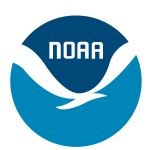- Domeniu: Government
- Number of terms: 30456
- Number of blossaries: 0
- Company Profile:
NOAA Coral Reef Conservation Program, National Oceanic and Atmospheric Administration, U.S. Department of Commerce
A type of cell commonly found in the gills of fishes and some crustaceans. They play a role in regulating the salt concentration of cells in relation to the external environment, and differ greatly between freshwater and saltwater organisms; also called "chloride secretory cell".
Industry:Natural environment
An enzyme that is able to synthesize DNA from information in RNA. It requires an RNA template and a DNA or RNA primer.
Industry:Natural environment
Any species of bony spiny-rayed fishes in the family Haemulidae. Grunts are medium-sized tropical fishes that are capable of making a grunting sounds by the grinding of pharyngeal teeth.They inhabit coral reef or hard bottom areas. Many forage at night over nearby sand and grass flats.
Industry:Natural environment
Family of genes that regulates activities of other genes (turns genes 'on' and 'off' ).
Industry:Natural environment
In statistics, the probability of a false rejection of the null hypothesis in a statistical test.
Industry:Natural environment
On a map or chart, a line connecting points of equal surface value.
Industry:Natural environment
Ribosomes are small cellular organelles composed of ribonucleic acid (RNA) and proteins. They are found free in the cytoplasm or attached to the endoplasmic reticulum. Ribosomes are involved in the synthesis of proteins by attaching to messenger RNA (mrna) and moving down it one codon at a time and then stop until transfer RNA (trna) brings the required amino acid; when it reaches a stop codon it falls apart and releases the completed protein molecule for use by the cell.
Industry:Natural environment
The concept of species in which a species is a lineage of populations between two phylogenetic branch points (speciation events).
Industry:Natural environment
The non-cellular gel layer (also called 'mesenchyme') of sponges. It is located between the epidermis (pinacoderm) and the choanoderm, the cell layer that lines the spongocoel. The mesohyle contains either spicules (supportive needles made of calcium carbonate) or spongin fibers (a flexible skeletal material made from protein); also called mesohyl.
Industry:Natural environment
The spread of a species to a new location. In many organisms, this happens at a particular stage in the life cycle, and is often critical for the species' survival. Organisms may disperse as spores, seeds, eggs, larvae, juveniles, or adults; to diffuse, spread or scatter as in oil spills.
Industry:Natural environment
